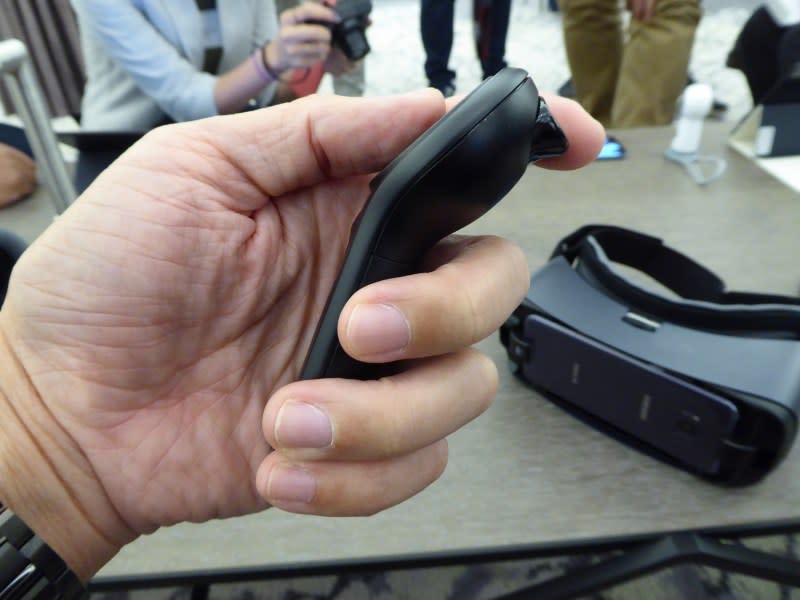First looks: Samsung Galaxy S8 and S8+ - To infinity and beyond!
Samsung's first 2017 Android Flagships - Galaxy S8 and S8+
The rumor mills have been working overtime predicting Samsung’s next flagship device, especially since the company took a much subdued stance in the months following the Note 7 affair. But, they’ve been picking up steam again with aggressive advertising and marketing to put the point across that any battery issues are a thing of the past. These days, you wouldn’t be able to browse a website or watch a video without seeing Samsung’s 8-point battery safety check ads.
Which brings us to today, the actual launch of the Samsung Galaxy S8 family of devices at the first major Unpacked event in New York. While you’re tuning in to the live-stream of Unpacked 2017, I’ve been fortunate enough to spend a bit of time with the devices the day before to bring you some actual product shots of the Galaxy S8 and S8+.

The Samsung Galaxy S8 will indeed come in two variants, a smaller 5.8-inch S8 and a larger 6.2-inch S8+. But unlike the previous S7 and S7 Edge, both the S8 and S8+ have identical specifications, software and design considerations. The only difference between the two devices seem to be their physical screen sizes and battery capacities. As such, the choice between the two will come right down to what fits your hand the best.
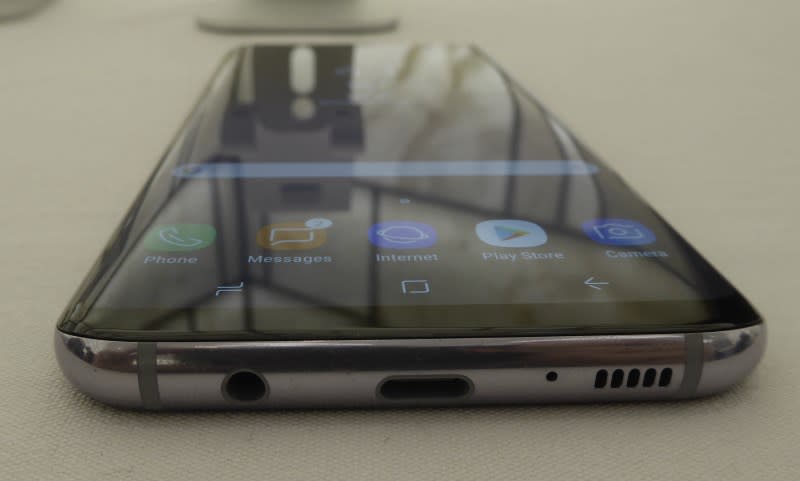


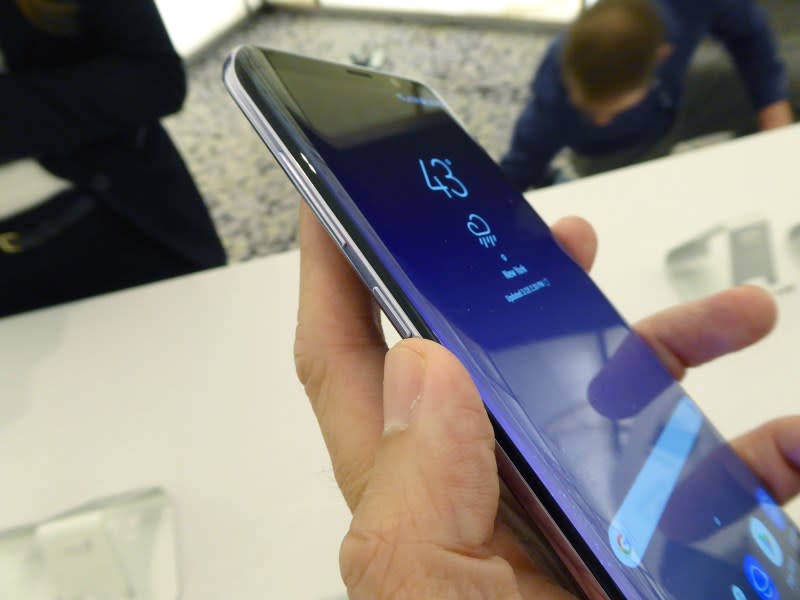
At first glance, both the S8 and S8+ look like souped-up S7 Edges. As expected, the S8 and S8+ will be getting a major boost in processing power, one of the first devices to use next-generation 10nm processors (either the Qualcomm Snapdragon 835 or Samsung Exynos 8895 depending on market, and I'm told that Singapore will receive the Exynos version), faster LTE Cat. 16 (up to 1Gbps peak download speeds) and Android 7.0 out-of-the box. The front camera has also been bumped up to an 8MP shooter (from 5MP on the S7 series) with an F1.7 lens, smart autofocus and face detection capabilities. Because of this, the S8 and S8+ will now support facial recognition unlocking, in addition to fingerprint and iris scanning.
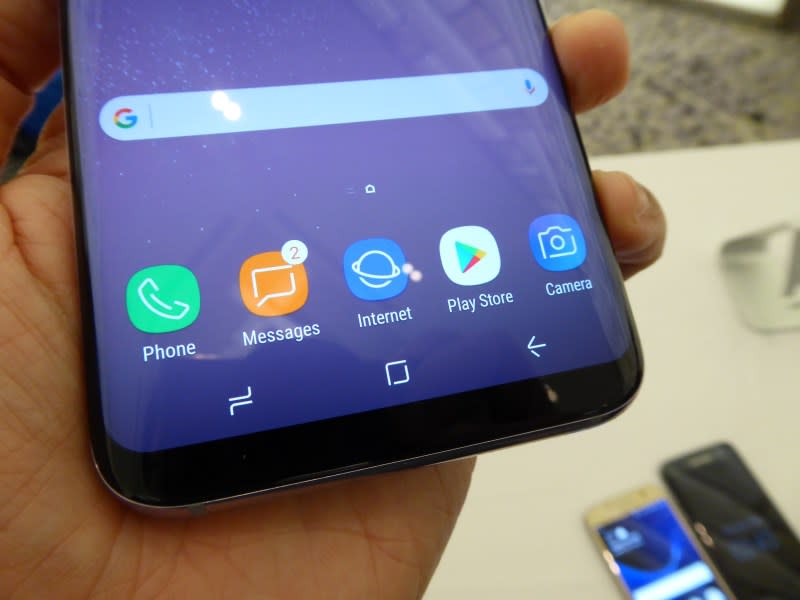


However, the rear camera remains the same 12MP, F1.7 Dual Pixel as found on the previous S7 series. Other features that you should expect to come standard from a flagship Galaxy device include IP68 weather-proofing, always-on display, fast wireless charging and microSD support up to 256GB.
The Samsung Galaxy S8 and S8+ will be globally available from April 21st 2017. We'll update this article as soon as we can confirm Singapore's launch date specifically.
I won't go into too much detail about other specs as they’re pretty straightforward if you look at the spec sheet below. What’s truly new about the S8 series is Samsung’s Infinity Display design and Bixby intelligent assistant integration, which I cover more in the following pages.
Galaxy S8 | Galaxy S8+ | |
OS | Android 7.0 | |
Network | LTE Cat. 16* *May differ by markets and mobile operators | |
Dimension | 148.9 x 68.1 x 8.0 mm, 152g | 159.5 x 73.4 x 8.1 mm, 173g |
AP | Octa core (2.3GHz Quad + 1.7GHz Quad), 64 bit, 10 nm process Octa core (2.35GHz Quad + 1.9GHz Quad), 64 bit, 10 nm process *May differ by markets and mobile operators | |
Memory | 4GB RAM (LPDDR4), 64GB (UFS 2.1) *May differ by markets and mobile operators | |
Display | 5.8” (146.5mm)1 Quad HD+ (2960x1440), (570ppi) | 6.2” (158.1mm)1 Quad HD+ (2960x1440), (529ppi) |
1 Screen measured diagonally as a full rectangle without accounting for the rounded corners | ||
Camera | Rear: Dual Pixel 12MP OIS (F1.7), Front: 8MP AF (F1.7) | |
Battery | 3,000 mAh | 3,500 mAh |
Fast Charging on wired and wireless Wireless Charging compatible with WPC and PMA | ||
Payment | NFC, MST | |
Connectivity | Wi-Fi 802.11 a/b/g/n/ac (2.4/5GHz), VHT80 MU-MIMO, 1024QAM Bluetooth® v 5.0 (LE up to 2Mbps), ANT+, USB Type-C, NFC, Location (GPS, Galileo*, Glonass, BeiDou*) *Galileo and BeiDou coverage may be limited. | |
Sensors | Accelerometer, Barometer, Fingerprint Sensor, Gyro Sensor, RGB Light Sensor, Iris Sensor, Pressure Sensor | |
Audio | MP3, M4A, 3GA, AAC, OGG, OGA, WAV, WMA, AMR, AWB, FLAC, MID, MIDI, XMF, MXMF, IMY, RTTTL, RTX, OTA, DSF, DFF | |
Video | MP4, M4V, 3GP, 3G2, WMV, ASF, AVI, FLV, MKV, WEBM | |
The Infinity Display
The biggest physical tell of the S8 and S8+ is the new design concept Samsung is calling Infinity Display, where you’ll get an almost bezel-less screen that’s curved at both sides (similar to the S7 Edge before), but now has up to 18% more (400 pixels more to be exact) vertical screen real estate.
The new screen resolution is 2,960 x 1,440 pixels, which equates to 570ppi for the S8 and 529ppi for the S8+. Both phones feature a longer 18.5:9 aspect ratio (compared to 16:9 on the S7 series), and are the first mobile displays to be Mobile HDR Premium certified. Not only is the new aspect ratio great for wide-screen movie viewing, the additional resolution also lets Samsung optimize the new phones for vertical multi-tasking in addition to the Edge Panels.


Before you balk at the screen sizes, the 5.8-inch S8 at (148.9 x 68.1 x 8.0mm) is actually physically smaller than the 5.5-inch S7 Edge (150.9 x 72.6 x 7.7mm). Not only that, the massive 6.2-inch S8+ (159.5 x 73.4 x 8.1 mm) is only slightly larger 5.5-inch iPhone 7 Plus (158.2 x 77.9 x 7.3mm). This is because the Infinity Display boasts an 83% screen to body ratio. In order to make this happen, Samsung removed the physical home button, replacing it with a haptic, on-screen home button. The physical finger print sensor is also moved to the back of the phone. It was also pointed out that both the S8 and S8+ will feature Corning Gorilla Glass 5 on the front and back of the device too.

Meet Samsung's new AI assistant - Bixby
With the Galaxy S8 series, Samsung enters the AI assistant fray with Bixby. Similar to Apple’s Siri, Google’s Assistant, Microsoft’s Cortana and Amazon’s Alexa, Bixby is a built-in voice activated assistant that will help you perform searches, set reminders or dictate messages from your S8 device.
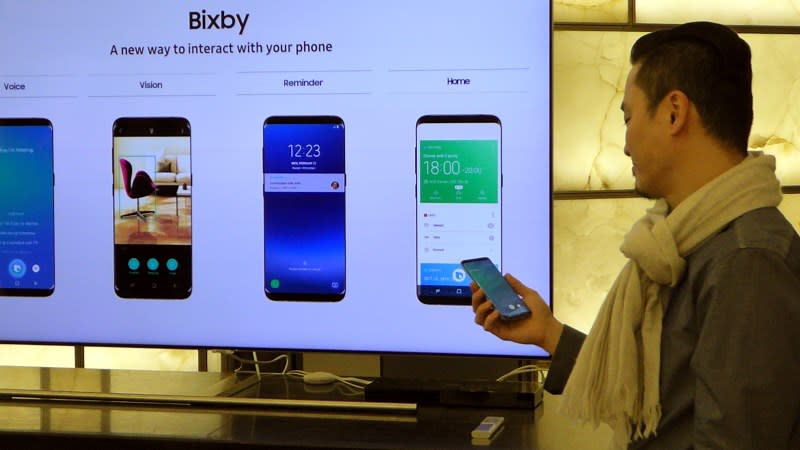
But there’s more. Besides voice, there’s also a built-in image recognition technology called Bixby Vision. You can take a picture to search for similar images, retrieve more information about a location or shop online for the pictured item with connected services.
As a personal assistant, Bixby will also have location awareness and will eventually learn your common habits and be able to offer personalized tasks, reminders and apps based on your routines.
Samsung has some pretty lofty goals for Bixby as we’re told that eventually, anything you can do with touch, should be replicate-able through voice as well. The Bixby experience should be a seamless one where you can switch between voice, tap and touch inputs. Of course, deeper app integration is required for Bixby to have more contextual awareness of app commands. At launch, most of the native Samsung apps on the S8 such as Camera, Contacts and Gallery have Bixby integration, as well as some popular third-party apps, with more on the way.
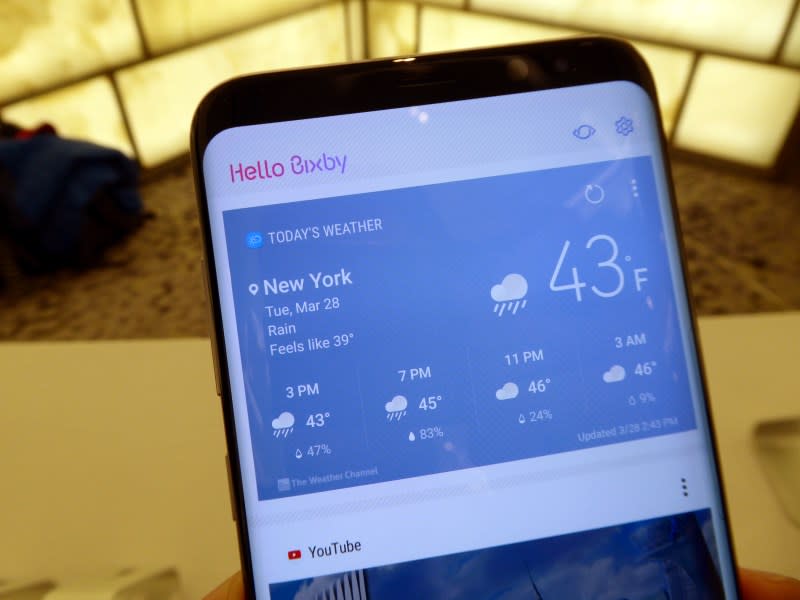
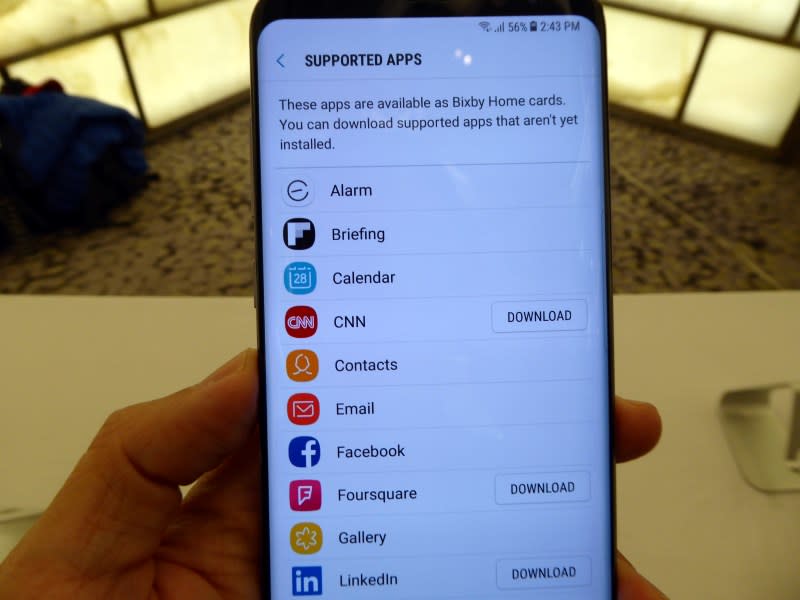

Bixby will also be the gateway for a complete Samsung connected-home ecosystem with the smartphone as a hub. This is similar to what Google Home and Amazon Echo is trying to achieve, but Samsung will have the upper hand in device integration since they practically make every other home appliance you can think of.
While this Bixby-enabled vision is still in a not-so-distant future, Samsung is already introducing a smart appliance hub app called Samsung Connect that can easily control and monitor all your connected Samsung devices, from smart TVs to fridges.

Another noteworthy software update that comes with the S8 and S8+ is an enhanced Samsung Health app. Besides typical health and fitness tracking, Samsung Health now comes with integrated professional healthcare and e-medicine services. For example, you can connect with real doctors or book virtual appointments via video calls. At the moment however, this service is only available in the US.
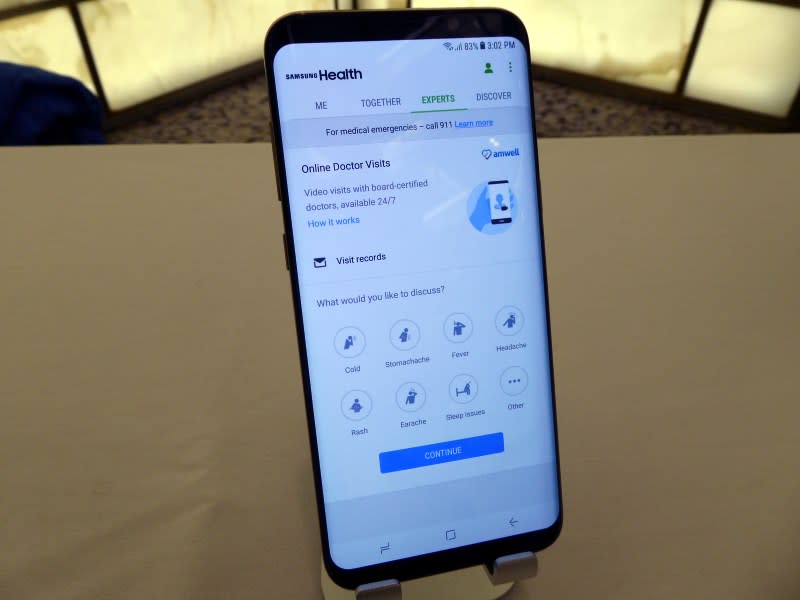
An updated Gear VR with Controller
The new Gear VR with Controller isn’t exactly new, being showcased at MWC recently, but Samsung took the opportunity to update the headset to support the Galaxy S8 and S8+ devices, especially since they now use USB Type-C connector. While the headset remains the same hardware-wise, it now comes in the new Orchid Gray color scheme.
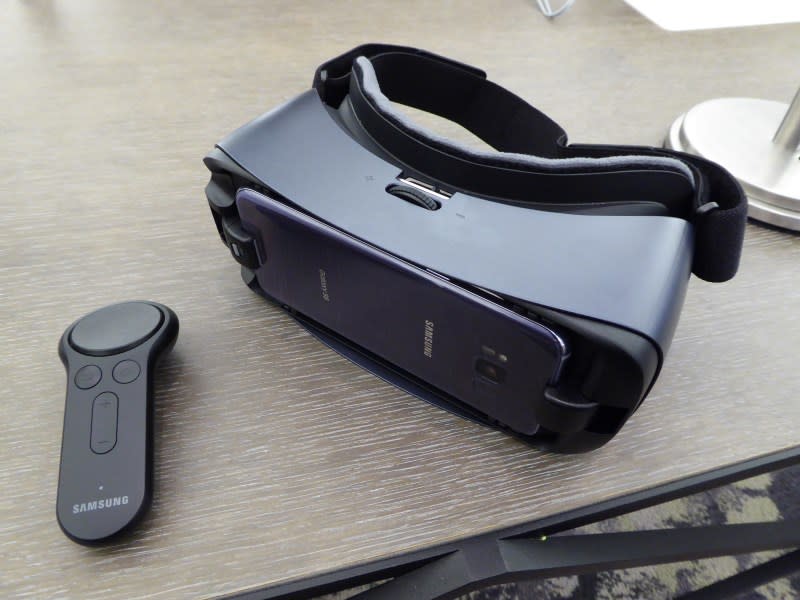

The new feature to Gear VR is a physical handheld controller with thumb-pad and trigger buttons, a welcome addition that makes VR app navigation so much smoother and intuitive now, especially for gaming. The Gear VR with Controller will be available in Q2 2017.

